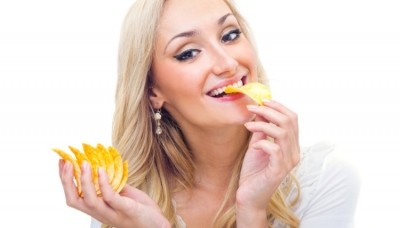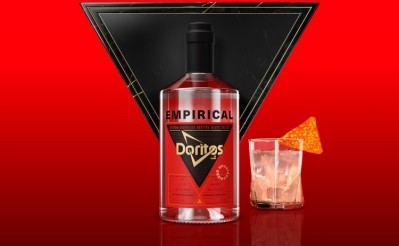Edible alcohol: Shrinking in drinking and rising in snacks

In recent years, the landscape of alcohol consumption has undergone a significant transformation. Shifts in consumer behavior, particularly among younger generations, have led to a decline in traditional drinking habits.
But alcohol isn’t vanishing from the market altogether. Instead, it’s being reimagined as an ingredient or flavor enhancer, creating unique opportunities for the bakery and snack sectors to capitalize on emerging trends.
The ‘sober curious’ movement
One of the key drivers behind declining alcohol consumption is the changing preferences of younger consumers, particularly Millennials and Gen Z. These generations are more focused on health, fitness and mental wellbeing than their predecessors. They’re shifting away from using alcohol as a refreshment or meal accompaniment and making it more of an occasional treat or avoiding it altogether.
The decline isn’t just about health: it’s also tied to broader cultural shifts and changing social norms. In many parts of the world, particularly in the UK, binge drinking and heavy alcohol consumption are becoming less socially acceptable. Young Brits are opting instead for daytime socializing, where alcohol is less likely to play a central role.
Recent research from Scotland’s Walker’s Shortbread has shown that almost half of the 2,000 UK consumers polled are drinking less alcohol now than they did previously (45%), something which is particularly evident among Millennials who are swapping drink (51%) and nights out for valued quality time with friends and family (57%).
When it comes to socializing, almost half said they preferred to meet friends or family at a café over the pub (45%). Meanwhile, going to a nightclub was voted least popular (9%), as 41% said they prefer to make plans earlier in the day so that they have time to relax in the evening, without paying for it with a hangover the next day.
Culinary innovation
This change is fuelling interest in alcohol as a flavor. Consumers are engaging with alcohol in novel ways – think alcohol-infused bakery goods and snacks that allow them to enjoy the flavor of alcohol without the associated health concerns or mind-altering effects.
“The future of alcohol may lie in food form, as innovative collaborations are redefining alcohol as a culinary flavor, appealing to a new generation of sober-curious, snack-loving consumers,” said LS:N global senior foresight analyst Alice Crossley.
“While alcohol consumption has declined in the UK by 16% between 2014 and 2024, driven largely by health-conscious Gen Z, younger consumers haven’t abandoned alcohol entirely. Instead, they are engaging with it in new ways, favoring alcohol-infused foods and novelty products over traditional drinking.”
She points to the ‘vodka pasta’ recipe that went viral on TikTok, showcasing how alcohol can be used creatively to enhance flavor and adding depth.
“As these consumer preferences evolve, the alcohol industry is increasingly focusing on flavor innovations and non-alcoholic versions of signature spirits integrated into food products,” said Crossley.
“This shift not only expands product offerings but also cements the relevance of alcohol in a rapidly changing market where its future may be more about eating than drinking.”
Flavor collabs
Alcohol is increasingly being used as a culinary flavor, driven by a series of creative collabs between food and beverage brands.
For instance, Finsbury Food Group's partnership with global drinks giant Diageo to launch one of its signature distilled gins in cake form, along with its Baileys range.
Then there is Tipsy Scoop’s bourbon-infused chocolate cake ice cream and Betty Crocker’s Bacardi Rum Cake Mix, which enable consumers to enjoy their favorite spirits in an entirely new form.
It’s a win for producers, too, to differentiate their products in a crowded market. Manufacturers can also leverage this trend by developing limited edition alcohol-infused snacks that appeal to the adventurous eaters of today. Gen Z, in particular, are drawn to bold and eccentric flavor profiles: a good example being Eatable’s Strawberries & Champagne popcorn.
Another significant trend in the alcohol market is the growing popularity of Low2No – non-alcoholic and low-alcohol alternatives – and the sector is seeing a raft of NPD from both small producers and established brands, according to Lumina Intelligence.
“An interest in health consciousness in conjunction with changes in missions involving alcohol triggered by the pandemic has resulted in a reduction of consumption, especially amongst the 18-35 age category,” said Lumina’s Holly Franklin.
The biggest motivation for drinking zero alcohol products is driving, while saving money and health concerns are also influencers.
While it means many in the alcohol industry have had to pivot to maintain relevance, it has created opportunities for bakery and snack brands to explore new revenue streams while aligning with other trends. Oatly is one brand to embrace this, in a partnership with white rum-based coconut spirit Malibu in July to launch the Piña Oatlada – a dairy-free, vegan-friendly, piña colada-flavored soft serve ice cream. The 1.5% abv treat was created in response to Gen Z’s interest in lower-alcohol, plant-based alternatives.
On the other hand, opportunities also lie in snack brands venturing into new territories by lending their already-standout flavors.
Doritos, for example, made its debut in the spirits world in 2023, launching the Doritos Nacho Cheese Spirit in partnership with Empirical Spirits. Known for its unconventional spirit-crafting, Empirical’s vacuum distillation uses real Doritos to create the liquor, extracting the snack’s essence thorough a low-temperature distillation process to preserve the delicate flavors. According to the producers, the drink opens with the umami and tangy aromas of nacho cheese, moving to the deeper, corn-forward flavours of the crisp and finishing on a soft salty note.
“Doritos is all about disrupting culture and bringing our fans unexpected, bold experiences”, said Tina Mahal, VP of marketing for Frito-Lay North America, at the launch.
So, while alcohol consumption may be on the decline, its influence in the bakery and snack sectors is far from fading.
By embracing alcohol as a culinary ingredient, brands have the opportunity to create innovative, flavor-packed products that resonate with modern consumers. As Gen Z and Millennials continue to prioritize health and wellness, the future of alcohol may lie not in the bottle, but in the snack aisle.

















